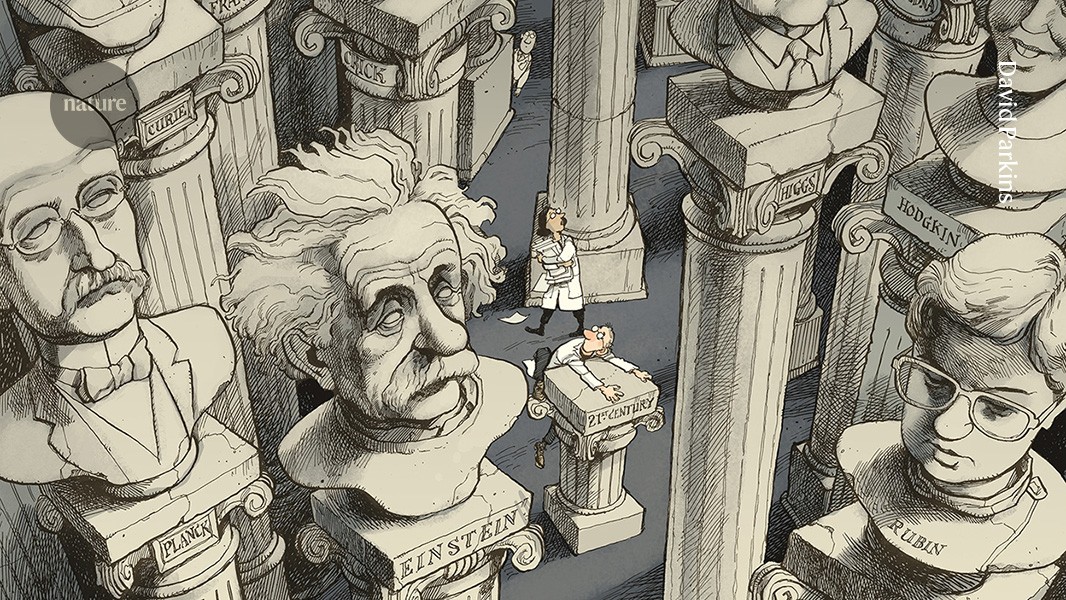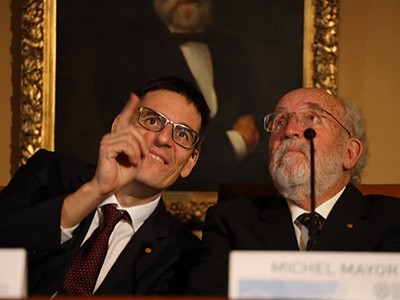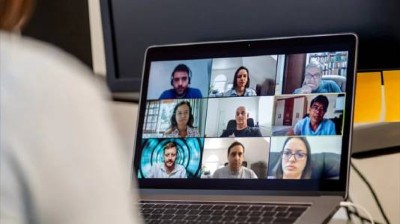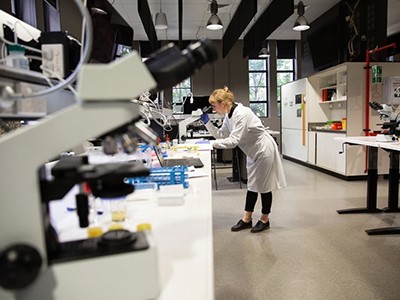Russell Funk had no idea how much his work would strike a nerve. But then came a blizzard of news stories and supportive e-mails from hundreds of scientists — along with a critical backlash.
Funk and his co-authors argued that scientific papers and patents had become less disruptive over time, by which they meant that fresh work was less likely to make previous articles obsolete. When they published their paper 2 years ago1, it drew the attention of more than 250 news outlets. This year, the finding even made its way into a US Congressional hearing.
“It was just incredible, and I’m still getting people reaching out,” says Funk, who studies the evolution of scientific knowledge at the University of Minnesota in Minneapolis. He co-authored the paper with sociologist Erin Leahey at the University of Arizona in Tucson and Michael Park, an organizational-behaviour researcher at the INSEAD business school in Fontainebleau, France.
The work seemed to crystallize broader concerns about the impact of modern science. For decades, science-policy experts have worried that breakthrough findings are harder to come by, in turn feeding into slower economic growth. It’s a theme that some of the world’s most powerful science officials are harping on today.
Is science really getting less disruptive — and does it matter if it is?
“Our progress today pales in comparison to the huge leaps of the twentieth century,” said Michael Kratsios, director of the US Office of Science and Technology Policy (OSTP), during a speech in April. The director of the US National Institutes of Health (NIH), Jay Bhattacharya, promised more “cutting-edge research” rather than “incremental progress” at his confirmation hearings in March — before overseeing widespread cuts in research grants.
It’s not just in the United States that politicians are talking about falling returns on science investment. “Science and innovation, they’re drivers of progress and growth, so if something is happening there, we should worry,” says Sam Arts, a strategy researcher at KU Leuven in Belgium. He and his colleagues have been talking to several European governments about how to help their research systems produce more disruptive findings.
Since the paper by Funk and his colleagues came out, however, critics have argued that its measure of disruption is flawed and, more broadly, that there’s little consensus on how to measure disruptiveness or novelty in a research paper.
Despite this, there does seem to be agreement that groundbreaking innovation is getting harder to achieve — but with many contrasting theories as to why. As the debate continues, researchers are starting experiments to try to better quantify groundbreaking work — and suggesting strategies that could promote it.
How to measure disruption
What Funk, Leahey and Park reported in 2023 is that the number of disruptive papers annually remained constant from 1945 to 2010, even as the number of academic articles ballooned, so that average disruption has fallen (see ‘Disruptive science dwindles’). If true, this implies that throwing more money and people at research hasn’t led to commensurate gains in breakthrough work.
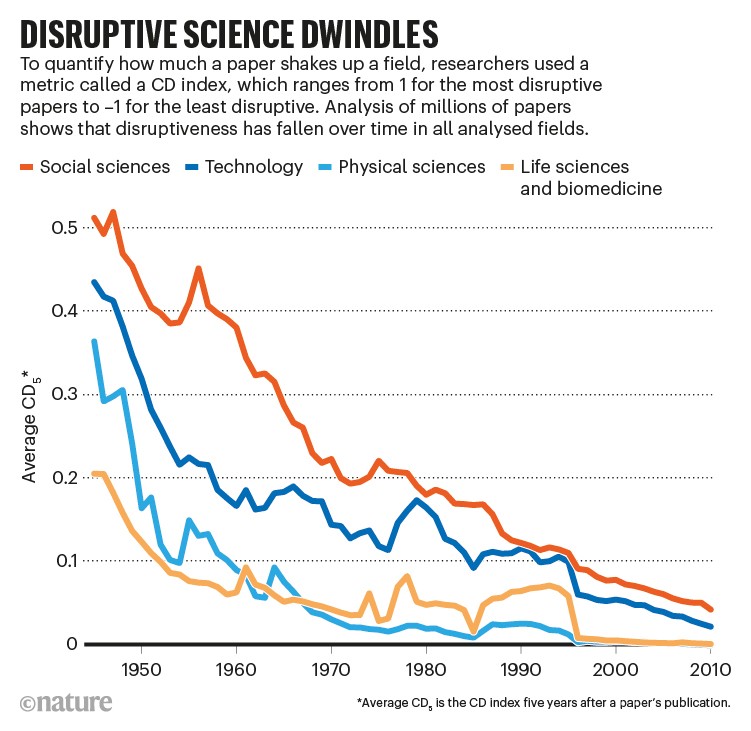
Source: Ref. 1
Their paper uses a metric that Funk and Jason Owen-Smith, a sociologist at the University of Michigan, invented2 in 2016. They measure disruption by examining citation patterns. The basic idea is that a disruptive article changes its field so profoundly that later works that cite it tend not to cite its references (because they are now mostly obsolete). But when an article merely consolidates earlier work, later articles that reference it will tend to cite the preceding work too.
The more an article is mentioned in later papers that do not cite that article’s references, the higher it scores on what is termed a consolidation–disruption (CD) index; it runs from −1 to 1.
Before the CD index, academics also measured a paper’s novelty, calculated by the extent to which it references papers from a spread of disciplines3. Novelty and disruption might seem almost synonymous, but the novelty metric really measures whether scientists have disparate influences, says Lingfei Wu, an information scientist at the University of Pittsburgh in Pennsylvania. By contrast, the disruption index measures actual outcomes through the citation impact on later papers, he says.
But citations are a tricky metric to rely on, say some researchers. One issue is that citations don’t reliably signal that a paper has intellectual influence. One 2022 survey of scientists found that more than half of the articles they cited had little-to-no influence on the papers in which they were cited, says Arts4.
Another issue is that citation culture has changed over the decades. Papers nowadays have more citations than in past decades, and they tend to cite research papers from further in the past. Meanwhile, past papers with few references could have an inadvertently high disruption score unrelated to their actual transformative impact, because it’s less likely that later papers will cite the few preceding works, notes Lutz Bornmann, a sociologist of science at the Ludwig Maximilian University of Munich in Germany.
Funk’s paper did, however, control for shifting citation patterns over time, and still found a significant decline in average disruptiveness.
Some critics of Funk’s work argued that the findings were warped by articles erroneously listed as having zero references owing to poor metadata, because they clustered at the beginning of the period studied. This would artificially drive up their disruption score. But Funk and his colleagues hit back in a February 2025 preprint5, arguing that their critics’ own data set included many more zero-reference papers of the kind that were supposedly warping the analysis.
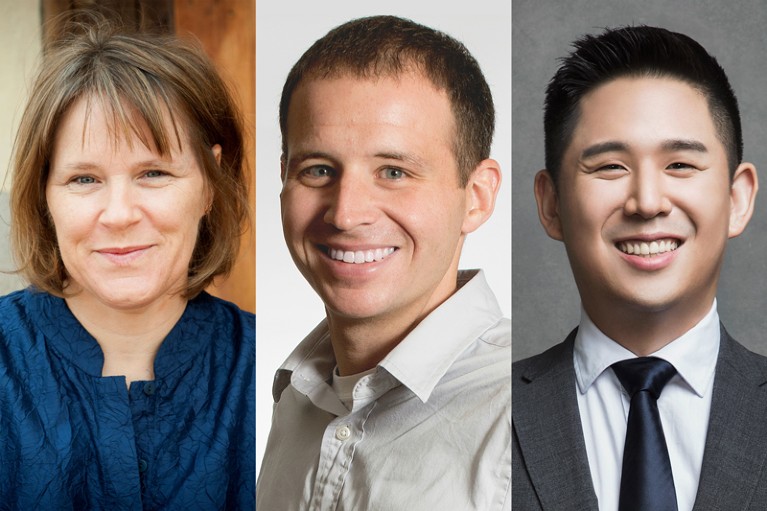
Erin Leahey, Russell Funk and Michael Park (left to right) argue that research papers have become less disruptive over time.Credit: Ivory Orchid Photography; Russell J. Funk; Michael Park
An alternative approach is to track the language used in papers. Funk’s paper tried this also, tracking the proportion of unique words and word combinations in paper and patent titles; it also analysed whether papers used words that arguably implied creation or disruption, such as ‘produce’, or consolidation, such as ‘improve’. Using both these methods, the researchers argued for a clear decline in disruptiveness.
But this year, Arts and his team came to a different conclusion. They examined the titles and abstracts of papers stretching back to 1901, to see when new noun phrases or words — such as ‘photon’, for example — appear, and tracked how they are picked up by later articles6.
Arts’s analysis found that fields have bursts of innovation at different times, rather than showing a universal decline in novelty. “Should we worry about it?” he says of the concern that novelty is falling over time. “Sure, but it’s not a first-order priority”.
Other papers do support Funk’s conclusion that disruptiveness and novelty are declining, says Bornmann. But he is still sceptical that any citation-based measures really capture what scientists mean by disruptive. “We still need conclusive empirical evidence,” he says.
Was AlphaFold disruptive?
One way to test the CD index is to pick an apparently major modern breakthrough: the 2021 paper describing AlphaFold7, the protein-structure prediction tool that won its creators a share of last year’s Nobel Prize in Chemistry. Its CD index score is low, says Funk — but he argues that’s appropriate. “It’s a profound scientific advance, but not one that conceptually displaces prior biological knowledge or folding principles,” he says. However, its CD index could become more disruptive over time, he cautions, because the early papers that cited the AlphaFold breakthrough tend to have been in progress when it was released, and so are more likely to cite older work.
The fact that AlphaFold doesn’t score highly on the CD index suggests that the metric fails to fully capture exactly what is meant by disruptive, argues James Wilsdon, who studies research policy at University College London. Overall, he’s unconvinced by any of the existing metrics used to measure disruption or novelty. “They’re all still fairly shaky proxies for what we’re really trying to understand,” he says.
There’s little consensus yet over which measures to use, concurs Wu, who says the field is still in an “early stage”. “It’s like quantum physics in the 1920s or 1930s,” he says. “The more you look at it, the more confusing it is.”
‘Disruptive’ science more likely from teams who work in the same place
These arguments matter because researchers are now analysing the effectiveness of research funding on the basis of different novelty or disruptiveness metrics. For instance, a study8 published last month argued that US scientists who received renewal grants from the NIH over the past four decades produced research of greater novelty than did comparable researchers who didn’t — perhaps illustrating long-term benefits from a stable funding environment. That study measured novelty by examining the uniqueness and trendiness of keywords and concepts in research papers.
Several scientists are planning experiments to find better measures for disruptiveness. Bornmann will ask researchers which papers they think have shifted scientific paradigms, and will then see which quantitative measures of disruption best predict those opinions.
And Roberta Sinatra, a data scientist at the University of Copenhagen who studies research systems, would like to ask scientists whether papers that have not yet been made public have the potential to be disruptive, then see, after publication, if they really do become widely cited breakthroughs “in the wild”.
“We need more active experimentation, rather than just observational data,” she says.
Funk says he is now largely focusing on measures that look at changing language in papers, patents and grant applications, rather than citations.
Innovation is harder
Although debate continues over precisely how to measure disruption and novelty, the emerging consensus does seem to be that scientific innovation is getting more difficult to achieve.
A main argument here is that growth in economic productivity, ultimately fuelled by innovations and new technologies, has been slowing in the rich world for several decades. For example, in his 2016 book, The Rise and Fall of American Growth9, economist Robert Gordon argues that the era of rapid growth enjoyed during the twentieth century — resulting from one-off technological improvements such as the car, flushing toilets and electric lights — is over.
“It’s been a lament, in varying forms, for 20 years,” says Wilsdon.
Researchers have also tracked diminishing returns for research and development (R&D) across several fields. For example, 18 times as many semiconductor researchers are needed today to sustain Moore’s Law — the trend for the number of transistors on microchips to double every two years — than were needed in the 1970s, according to one prominent paper10 by a team of economists in 2020. A similar trend is seen in agricultural productivity and in treatments for heart disease and cancer, they noted. “Everywhere we look we find that ideas, and the exponential growth they imply, are getting harder to find,” the researchers wrote.
And other research11 has found that the number of new drugs approved per billion dollars of R&D spending, adjusted for inflation, has halved roughly every nine years since 1950.
Since the mid-twentieth century, there’s been an explosion in science funding, notes Sinatra. From 1956 to 2020, US spending on research and development grew 11-fold in real terms. “The amount of research, the amount of people working on research, is exponentially growing,” she says.
Yet the resulting breakthroughs don’t seem to be commensurately more impressive, in Sinatra’s opinion. “We don’t have a longer and longer list of discoveries worthy of a Nobel prize,” she argues.
She’s not alone in that impression; Funk has gathered more than 40 articles pointing to declining rates of innovation. Matt Clancy, an economist at Open Philanthropy, a US-based not-for-profit grant-maker, surveyed the evidence in 2022, and also argues that discoveries are failing to keep pace with the rise in the number of scientists and research funding. “Science is getting harder,” he concluded.
What’s going on?
If returns on science investment are indeed shrinking, there are plenty of potential culprits.
The most obvious — as researchers told Funk in their e-mails responding to his paper — is that scientists are now so hemmed in by writing grant applications, administrative duties and teaching, that they have little time for original thought. One Dutch study has found that full professors at universities in the Netherlands spend less than 20% of their time on their research12.
Compared with half a century ago, modern-day researchers have much less freedom to go in unusual directions because of the rigid structures of academic careers and funding, thinks Patricia Fara, a historian of science at the University of Cambridge, UK.
James Watson and Francis Crick effectively abandoned their ongoing PhDs when they worked towards their famous discovery of DNA’s structure, she says. “If they’d have absconded now, as they did then for several months from their major research project, they’d have been in terrible trouble,” she says.
Another potential explanation is that, under intensifying pressure to publish, researchers are ‘salami slicing’, spreading ideas more thinly across more papers and reducing the disruptiveness or novelty of each article.
Renewal of NIH grants linked to more innovative results, study finds
From 1996 to 2023, looking at broad, global-level data, the number of papers per researcher roughly doubled, calculates Vincent Larivière, an information scientist at the University of Montreal in Canada. An analysis published last year found that the number of papers a scientist publishes is inversely proportional to their disruptiveness13.
Funk adds that the issue is not merely a problem of ballooning mediocre science at the bottom. His paper found that disruptiveness is also declining among Nobel-winning papers and in those published in the high-profile journals Nature, Science and Proceedings of the National Academy of Sciences.
Another drag on science is expensive equipment. Robert Boyle, the seventeenth-century Anglo–Irish natural philosopher, was able to conduct experiments in his London townhouse, says Dashun Wang, who studies management and organizations at Northwestern University in Evanston, Illinois. But today, pointing to examples of massive infrastructure such as the Large Hadron Collider near Geneva, Switzerland, “science has become so vast and more complex”, he says.
One more issue is that as scientific knowledge expands, it takes longer for scientists to learn enough to be at its cutting edge. “We’re standing on the soldiers of the giants,” says Wang. “But these giants, they grow taller at an exponential rate.”
Limited attention?
Sinatra posits that disruptive papers are still out there, but that the scientific community has limited time to read, understand and cite new works, meaning that only a set amount each year can be lauded as breakthroughs.
‘Herding effects’ — potentially made worse by social media and algorithmic selection of articles — risk focusing scientists’ attention on a narrow stream of papers, she suggests.
“To be a breakthrough, you need collective attention,” she says. The implication is that “there might be breakthroughs that we are just missing”. Articles can go unnoticed for years, even decades, before suddenly being discovered and becoming widely cited.
But the most intractable issue connected to slower innovation is the idea that researchers have already harvested the low-hanging fruit and now are doomed to put in exponentially more effort to make fresh discoveries.


